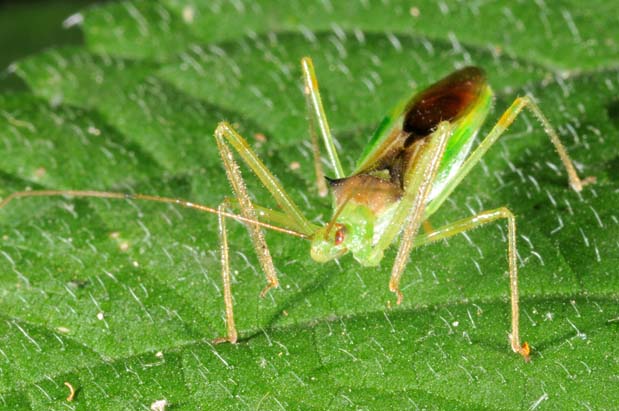

|
|
Assassin Bug adult
(John Obermeyer, Purdue University) |
|
Common Name: Assassin Bug - adult
See also: larva | benefit Scientific Name: Reduviidae: several species Status: beneficial predator Beneficial Stage: nymph and adult Biology: Assassin bug species vary greatly in both size and coloration. Many are small (1/2 inch) and are green or brown. Others, such as the large wheel bug, grow to 1 1/2 inches are gray in color and have a distinctive, cog-wheel-shaped thorax. Assassin bugs have an elongated, narrow head; a long, three-segmented mouthpart that appears as a beak; and an abdomen that is often widened at the middle, exposing the margins of the segments beyond the wings. Assassin bugs are aggressive and are not afraid to attack creatures much larger than themselves. They will inflict a very painful bite to humans if handled carelessly, causing a severe reaction in some persons. The assassin bug is so named because of its ambushlike way of hunting its prey. They lie in wait on various forms of vegetation, such as trees, weeds, and bushes until an unsuspecting prey insect happens by. They then rush to the prey, stab it with their sharp mouth part, inject a lethal toxin that dissolves the victim’s tissue, and then suck out the liquefied tissue. |
 |
||||||||||||||||
|
|
|||||||||||||||
|
Purdue Extension Entomology, 901 West State Street, West Lafayette, IN 47907 USA, (765) 494-4554 Department of Entomology | College of Agriculture | Extension © Purdue University | An equal access/equal opportunity university | Integrity Statement | Copyright Complaints | Maintained by ENTM IT Trouble with this page? Disability-related accessibility issue? Please contact us at entmwebmaster@purdue.edu so we can help. | ||||||||||||||||
